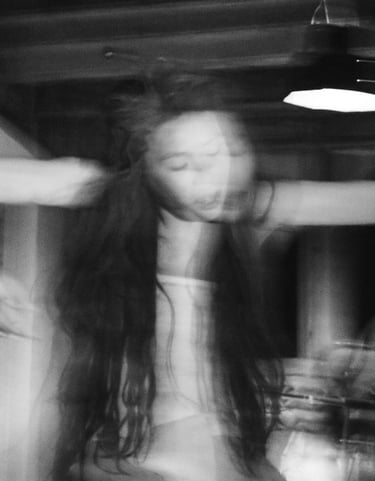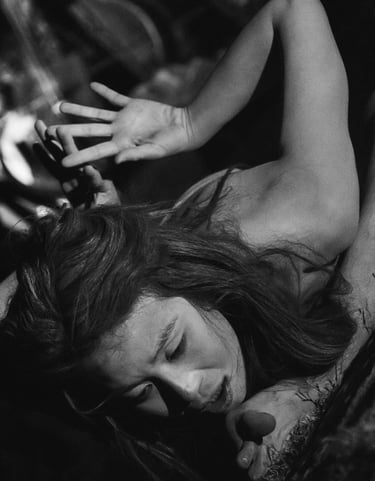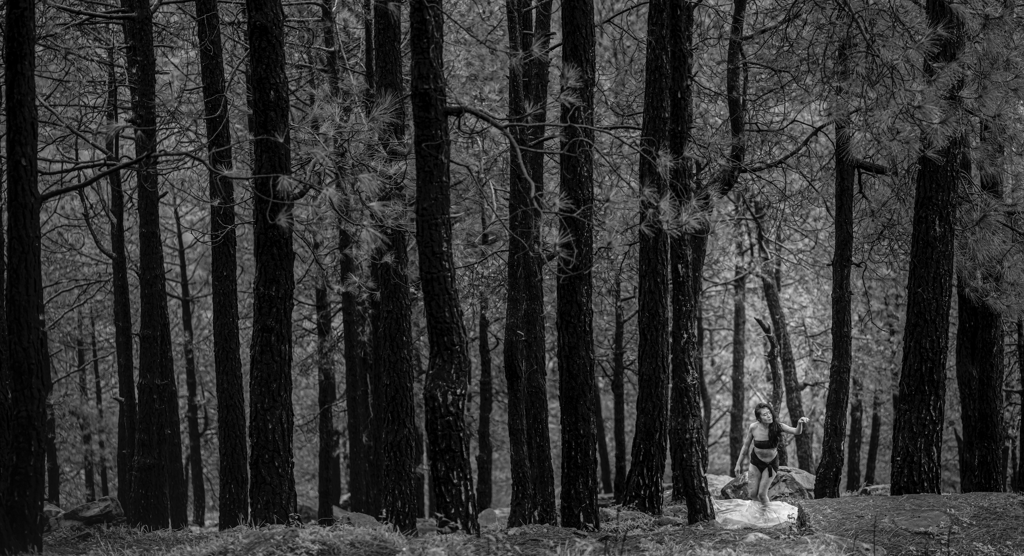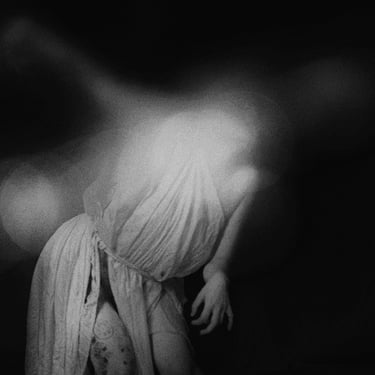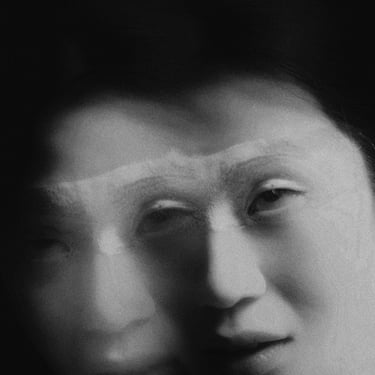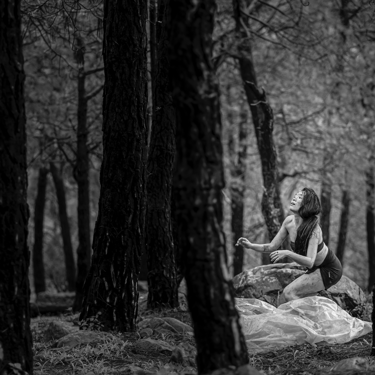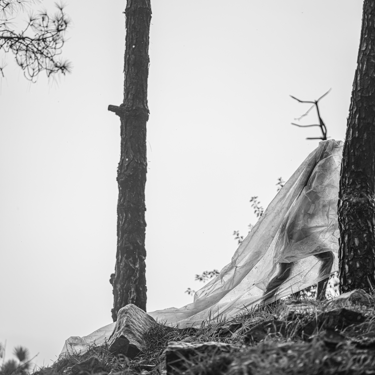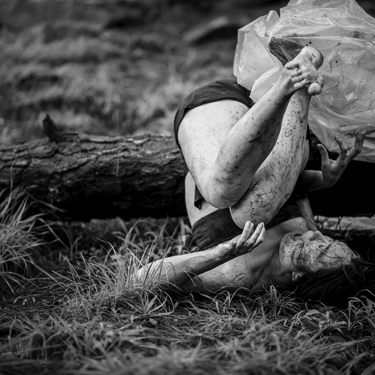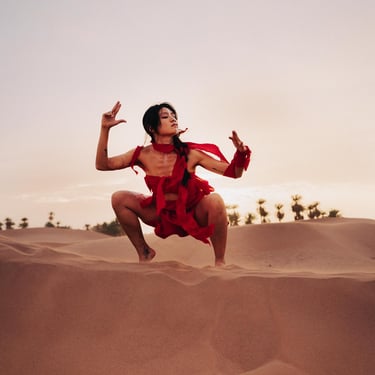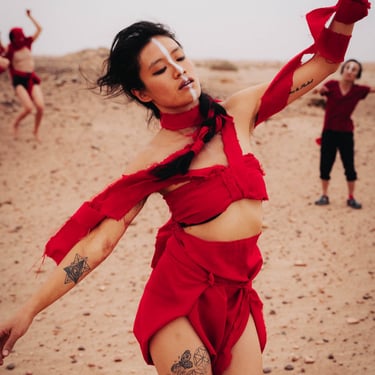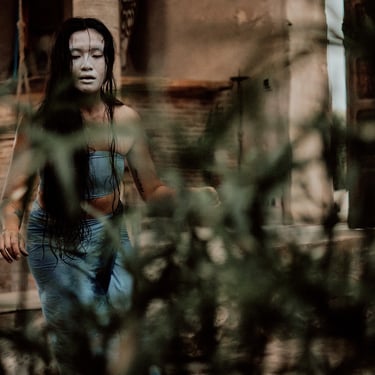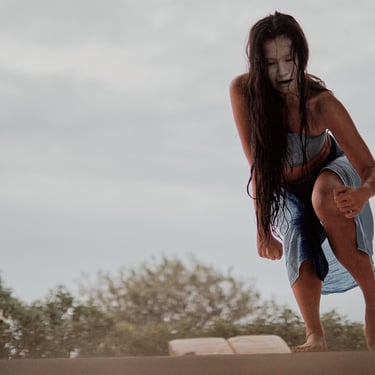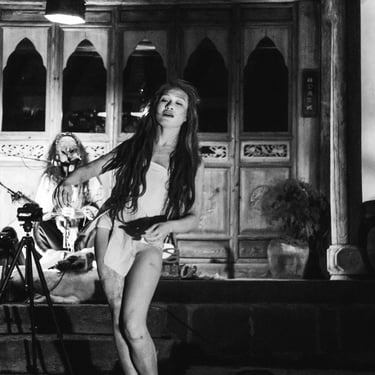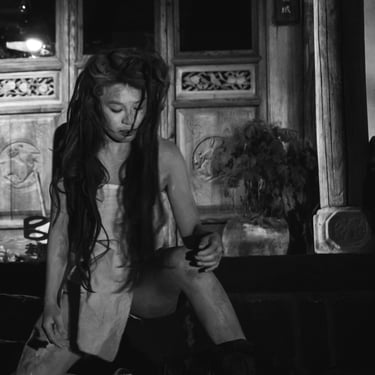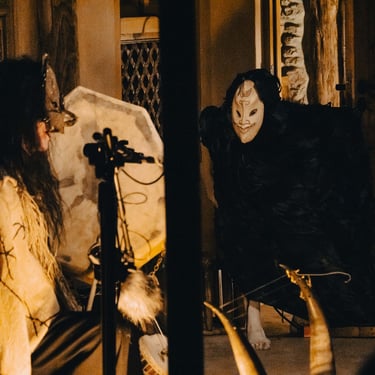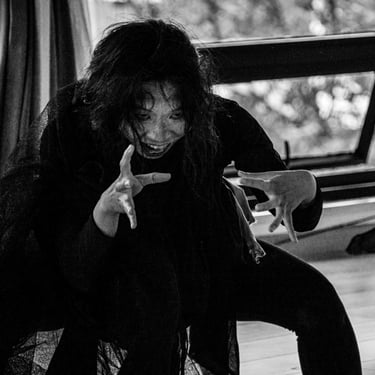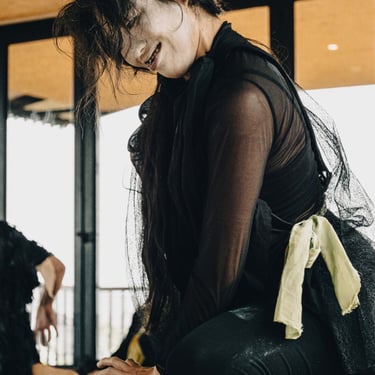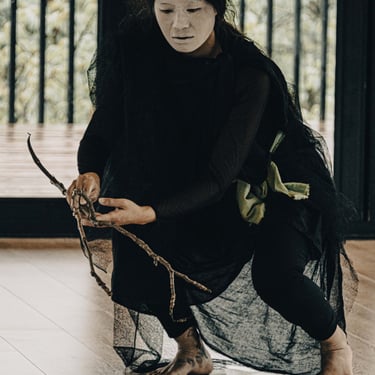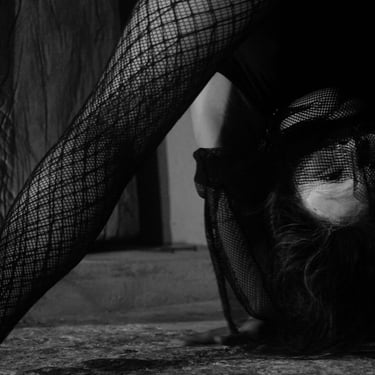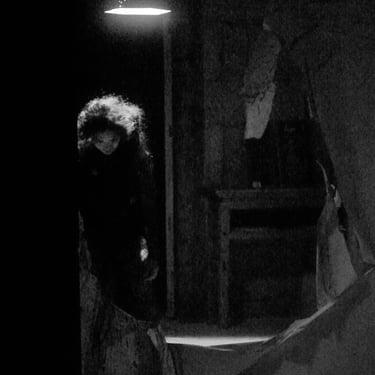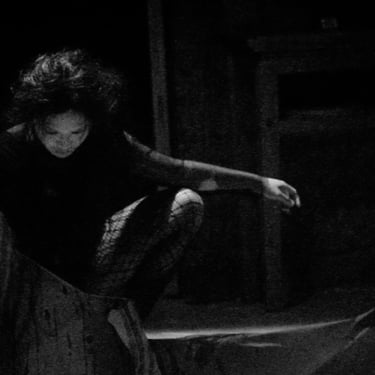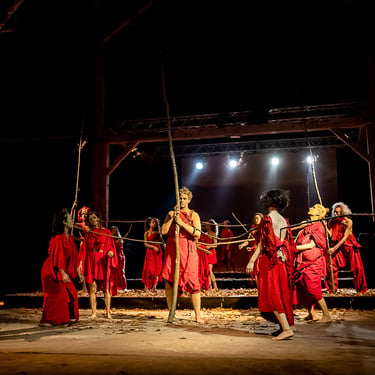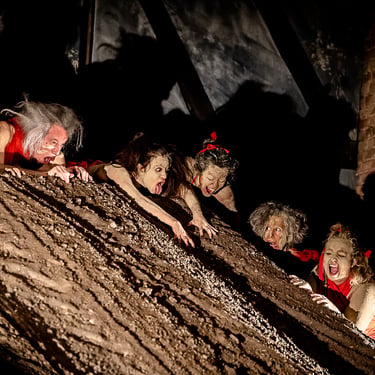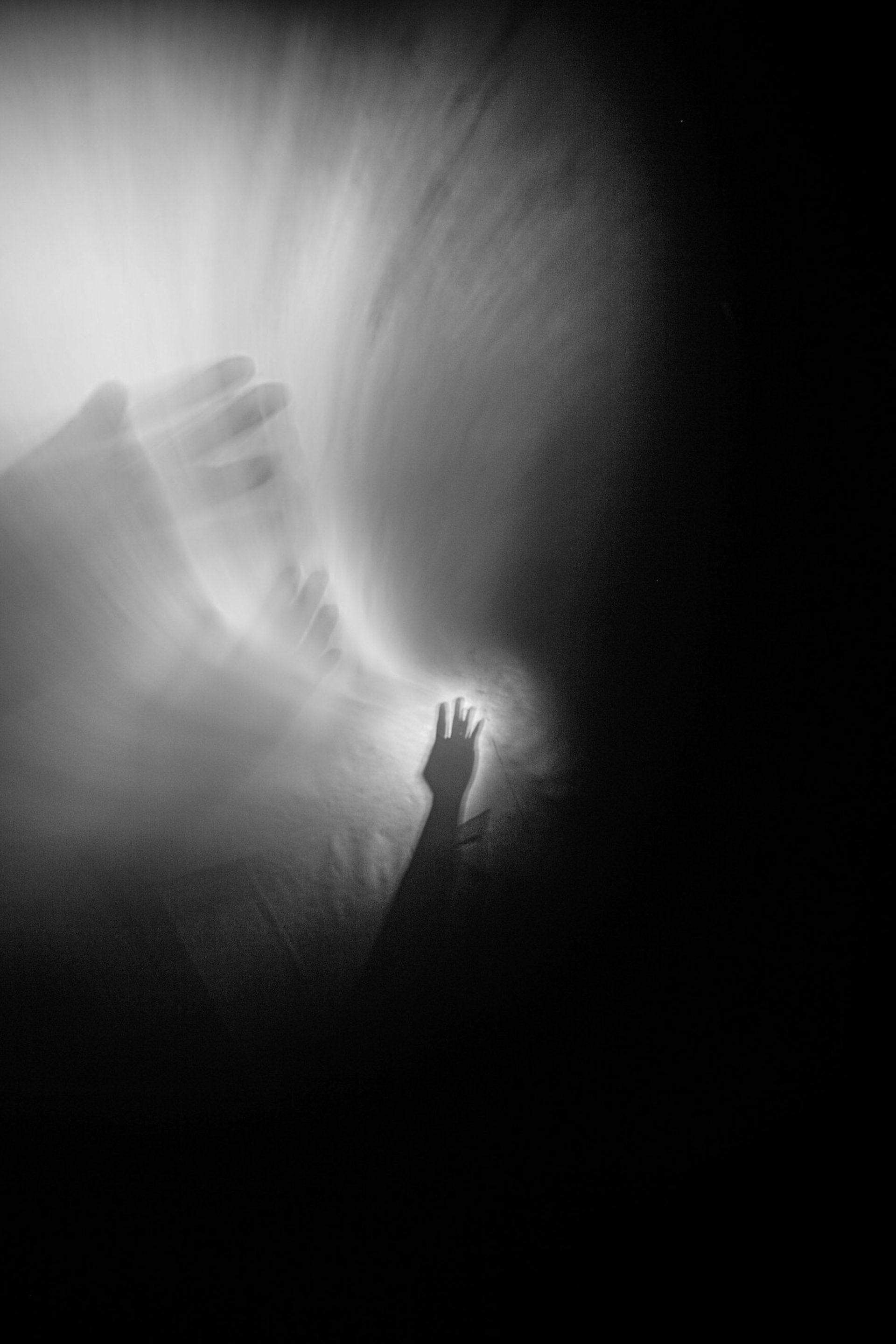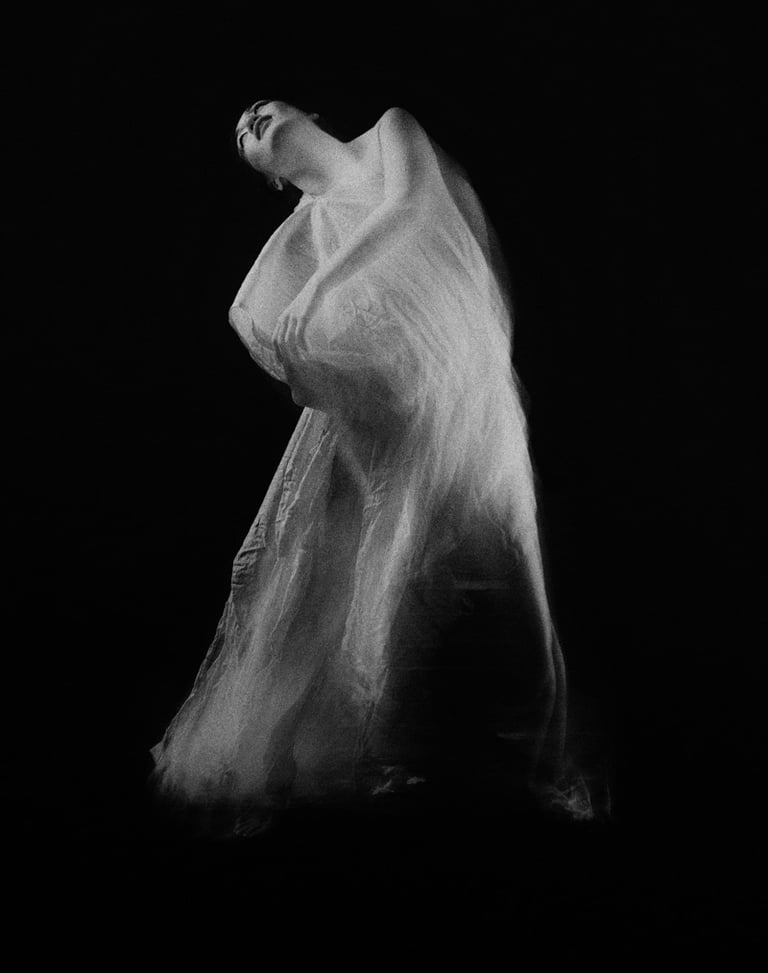

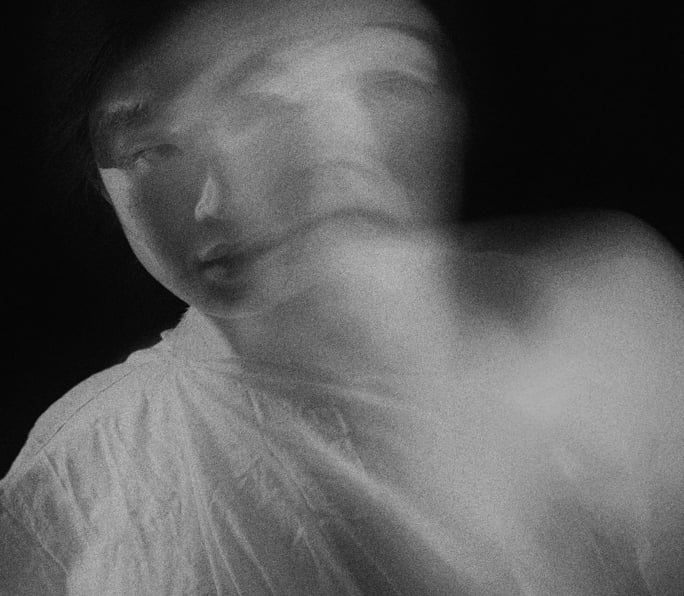

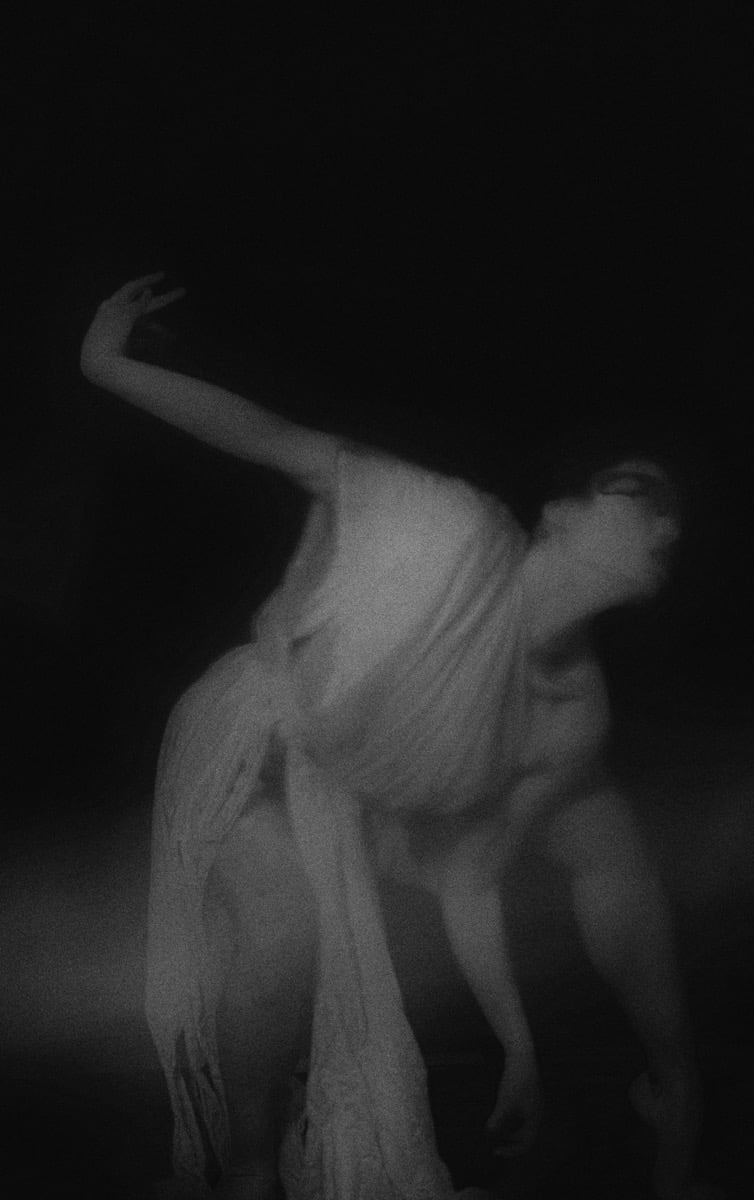

Yi Chen
A Butoh based dancer, choreographer and teacher
© Raul Bartolome
Yi Chen is a Butoh based dancer, choreographer and teacher/medium born in China. Her work explores a dimensional space bridging the visible and invisible. Body is the movement; space is the dance. In Butoh, the body’s formlessness shapes form, creating a space that invokes a life force—originating from, yet transcending, the dancer and audience. She is passionate about how this life force reveals the interconnection of all existence in the universe through dance—spanning past, present, and future.
"I encountered Butoh first in the Himalayas during monsoon, where mist are changing without rhythms, worms wriggling in a chaos pattern, body moves as if the mountain, often wandering away is whether what you see is the seer or the seer is seeing. For me, that is Butoh, it builds a bridge, in between the visible and invisible, expanded life concept.” - Yi
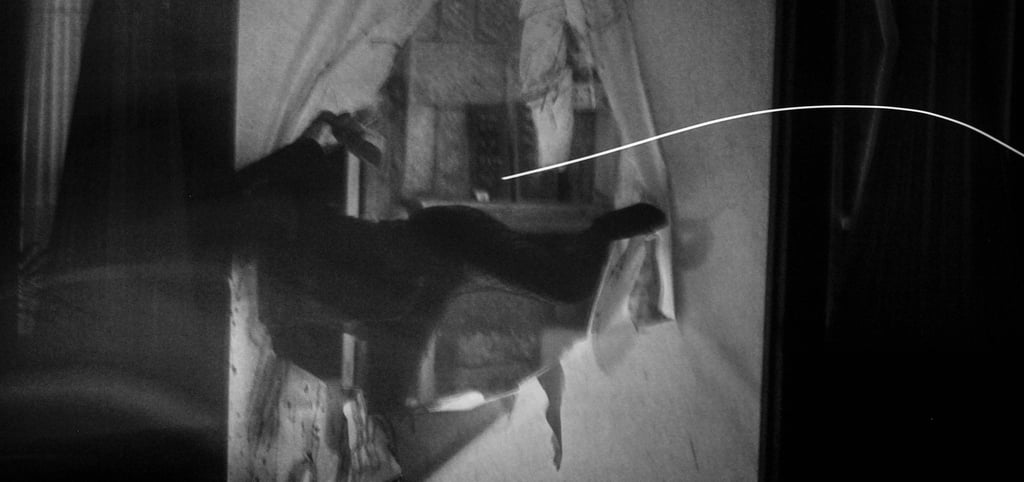

between the Visible and invisible
Ankoku Butoh
Known as the "Dance of Darkness," darkness is the color of the unknown, a maternal force that gives birth to light.
Empty Body (空の身)
The concept of Empty Body is the fundamental to Butoh training. It refers to the process of emptying the body of preconceived notions, habits, and societal conditioning to create a vessel for raw, unfiltered expression. Yet, Empty body is only a state of existence, it is not about empty, but the ability of being empty. Inspired by the practice of eastern martial art and body training methods like Qigong, Kalaripayattu, Noguchi Taiso and Ankoku Butoh basic exercises, we are guided to:
Releasing Tension: Letting go of physical and mental tension, allowing the body to become a neutral, receptive space.
Shedding Identity: By stripping away personal identity, social roles, ego, and the concept of Body and Life, the dancer becomes a blank slate, open to transformation.
Embracing Vulnerability: The "empty" state allows dancers to access deeper layers of the subconscious, where emotions, memories, and primal instincts reside.
Connection to the Unknown: An empty body is seen as a gateway to the unknown, where the dancer channels energies, spirits, or abstract concepts beyond the conscious self.
Becoming (なる)
Becoming is a process of transformation and metamorphosis, where the dancer transcends their human form to embody other entities, states of being, or abstract concepts. This method is deeply tied to Butoh's philosophy of fluid identity and the dissolution of boundaries between self and other.
Shape-Shifting: Dancers "become" animals, elements (like water or fire), or even inanimate objects. This involves a deep imaginative and physical engagement with the chosen entity. Through shifting the forms we Become the whole existence in a somatic approach.
Embodying The Space Between Duality: Becoming often involves exploring contradictions—life and death, beauty and grotesqueness, light and darkness—to taste the dynamic, layered shifts that occur in an instant.
Improvisation and Intuition: Becoming relies heavily on improvisation, as the dancer must respond intuitively to their inner impulses and the external environment.
Shisha: Shisha represents a constantly shifting state between life and death. As Hijikata said, "To dance Butoh is to become Shisha, to die and be reborn in every moment." This formless, in-between state allows us to fully embrace Becoming, leaping freely within the liminal space.
Subbody Butoh
Subbody Butoh emerges from the vastness of the Himalayas, born from the research of Lee Rhizome and the collective explorations of countless dancers, artists, seekers, and researchers over decades. It is a practice deeply rooted in and honoring Tatsumi Hijikata's Ankoku Butoh.
Subbody - Subtle (Resonance) Body
When we listening deeply to the dark unknown within the body, we sense things we do not fully understand. The body contains tens of trillions of cells, each possessing its own Qualia, and each Qualia resonates with everything in the world—sunlight, gravity, humidity, scents, images, memories, and more. The resonant "totem" of each cell varies, creating a constantly shifting, ambiguous sensation. It is a transformative flow of perception, where even feelings, delusions, or imaginations become indistinguishable. Qualia is extremely subtle, changing every millisecond. This internal flow triggers changes in external form, while shifts in external form simultaneously influence the internal flow, creating a mutually reinforcing relationship.
Subbody - Subconscious Body
When we enter a trance-like state between wakefulness and dreaming, the transformation of form breaks through the judgments and limitations of dualities such as "self and other," "right and wrong," "beauty and ugliness," extending the concepts of body and life. In this nonlinear, intuitive mode of thinking, we are better able to draw inspiration from the body and intuition, unlocking and releasing our creative potential within a more open and imaginative mental space. It is an exploration of the unique, innate dance within every life.
© YunPeng云鹏
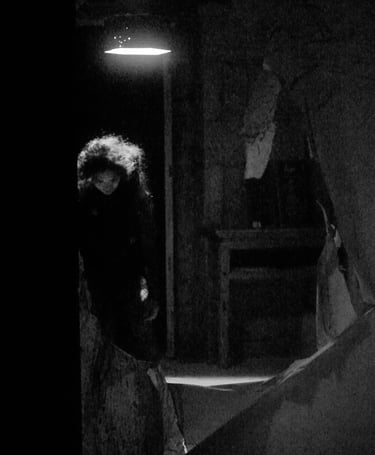

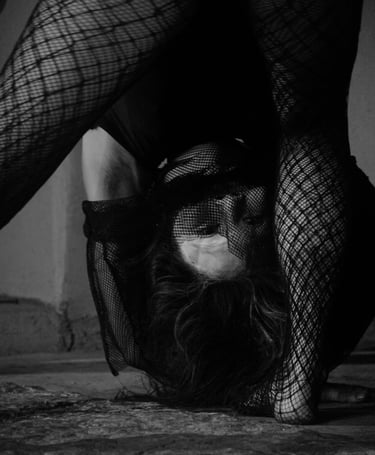

© YunPeng云鹏
"Butoh is not an expression, not like a naked expression of raw emotions and feelings. We swallow it, chew it and wait for it to ferment until it becomes a beautiful aged wine. Wait, wait, watch with the eyes of a rock cicada, and sink with it. This is the life of Butoh." - Butoh co-founder Tatsumi Hijikata
Flower of Kan (癇の花)
Flower of Kan(癇の花) The Kanji Japanese character for "Kan" is written as "癇". "疒" means "sick or disabled”. And "間 (=Ma)" means “in between”, it is also symbolised looking at the rising sun/moon “日/月" from the gate “門”. Life is sometimes squeezed, twisted, poisoned, and deformed by irresistible forces. It is not always considered beautiful. Yet, the dissonant space in the collective consciousness breeds profound flowers.

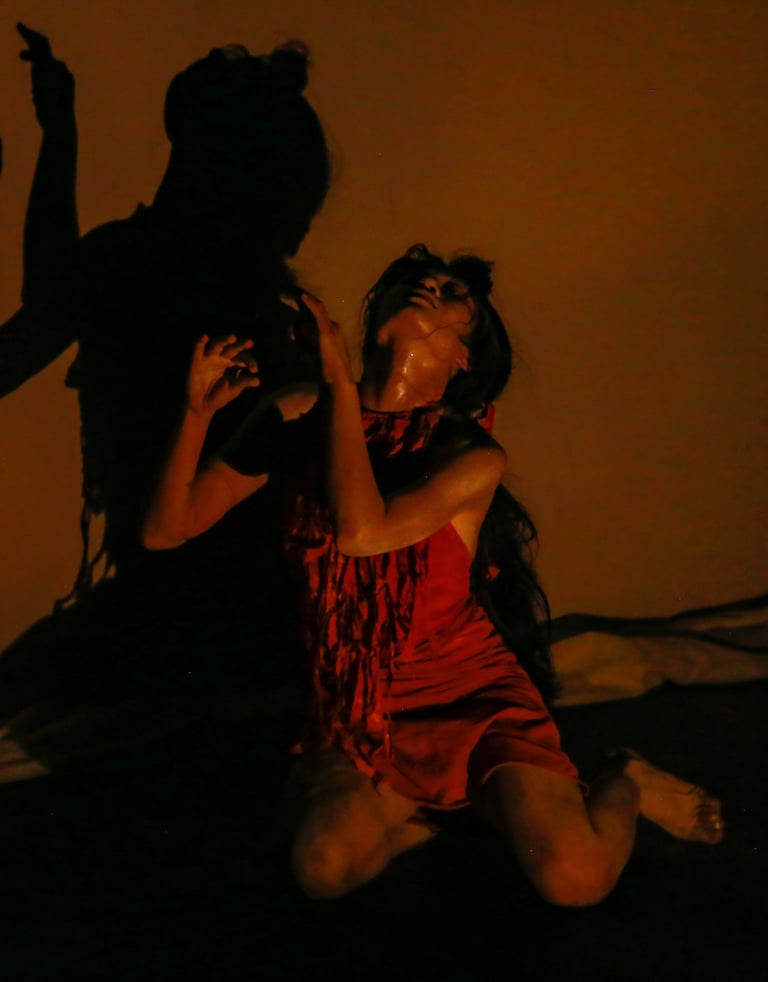

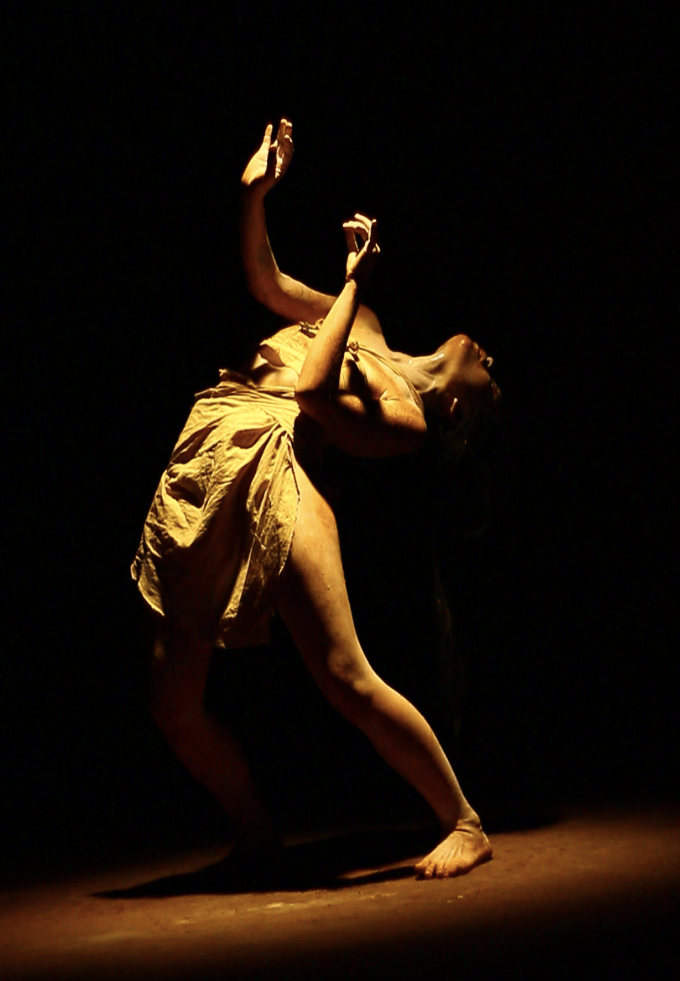

Flower of Kan (癇の花)
The Kanji “癇” (Kan) blends “疒” (sick/disabled) and “間” (in-between), symbolizing the rising sun/moon through a gate. This dance work explores the collective dissonant beauty, embodying the liminal state between forces.
Dark Deller
WORK
It is a solo dance piece performed in Tantrotsav Festival 2022, India.
In the shadowed void, the dancer becomes an instrument of the unseen, moved by a divine force hidden in the dark. Each gesture is a whisper from the abyss, each breath a bridge between the human and the eternal. A journey into the mysteries of surrender and the unseen.
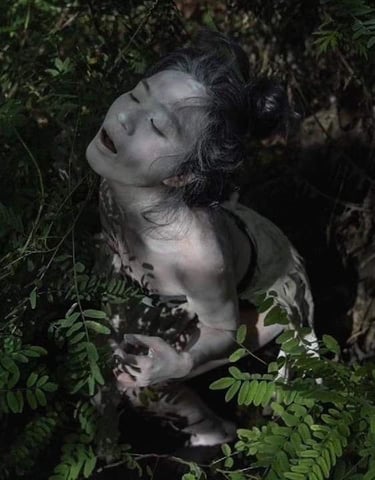

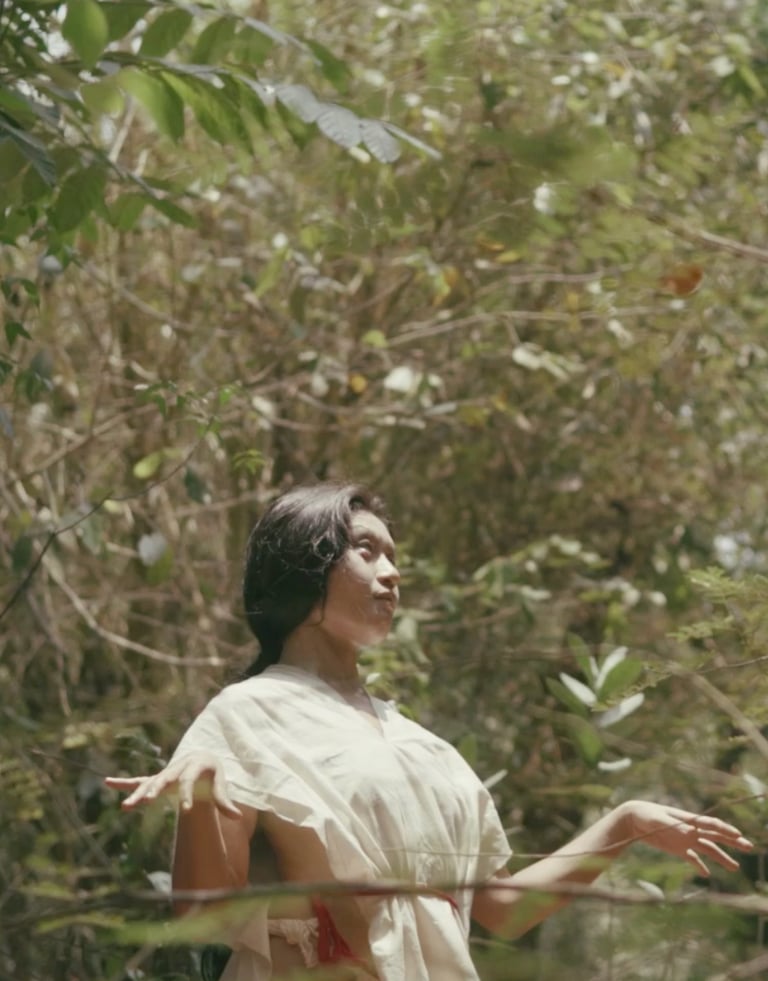

Dance Film - Become
A cinematic journey into the essence of Butoh, The body is the movement, The space is the dance.
Dance Film - Skin
A short film exploring the primal language of touch through Butoh and Contact Improvisation. It traces the unseen threads between human skin, the earth’s skin, and the invisible contact that binds all living beings, from womb to world.
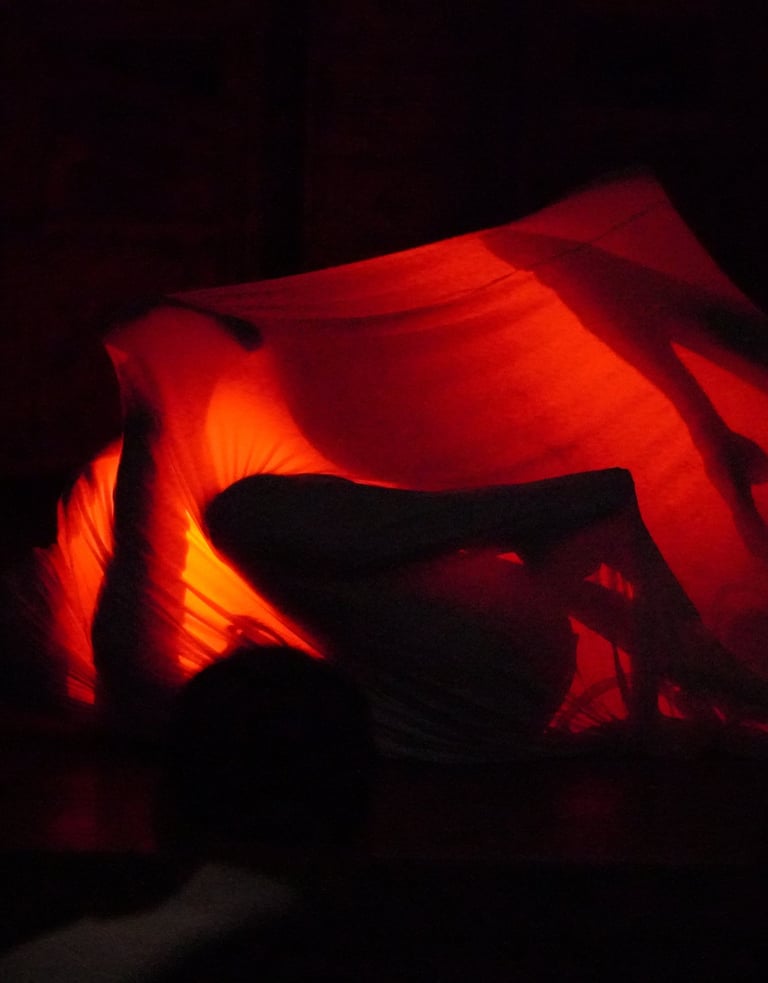

Unborn
UNBORN is a duo dance performance weaves a canvas of real-time fluidity caused by the resonance changes of subtle cells, shuttling between the imminent birth and the unborn shadow of the collective subconscious.
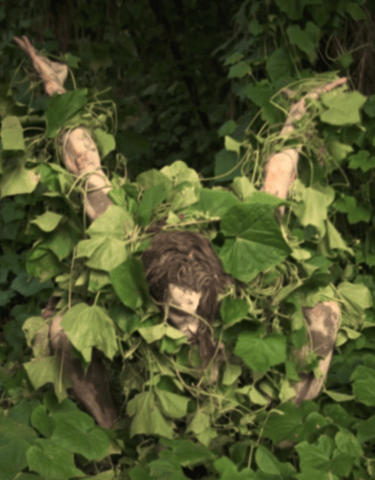

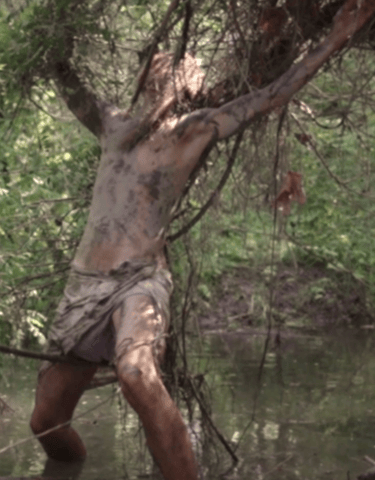

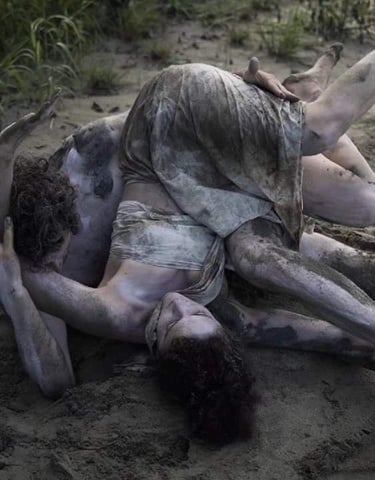

Desert Mirage Project
How does the body resonate with the rhythm hidden behind the silence? How are the outer and inner movements moved by the timelessness and spaciousness of the Sahara? When all our senses and instincts are sharp by primordial nature, can we reconnect with life's origin? Through dancing, silence walking, and a nomadic way of life. We can attune our body to the frequency of the Sahara. Dance is just be, in an original, authentic and simple manner.

PROJECT
Desert Mirage
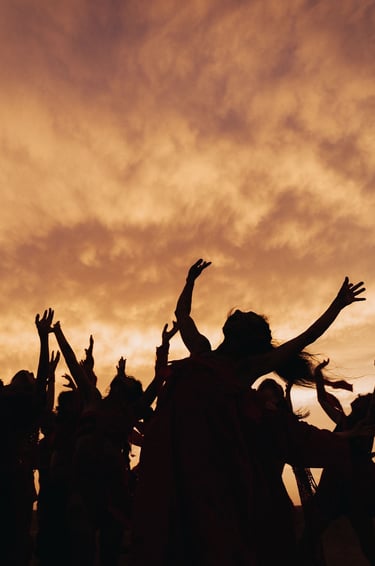

Dance research project in the Sahara
Space Between
Butoh Dance Festival
Immersive Butoh Museum
Immersive and intimate Butoh Performance
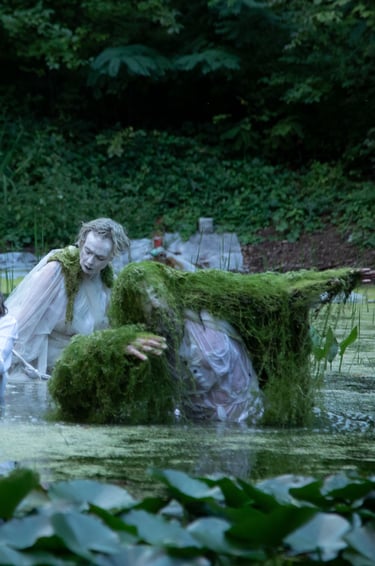

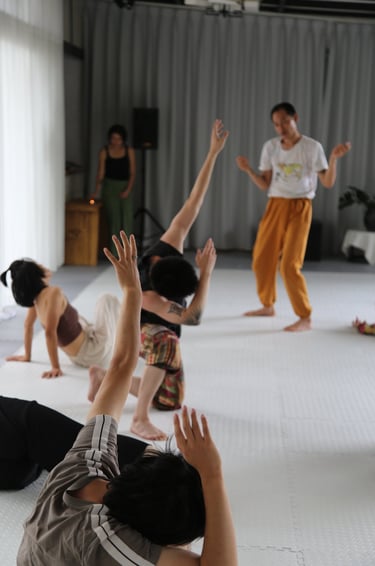

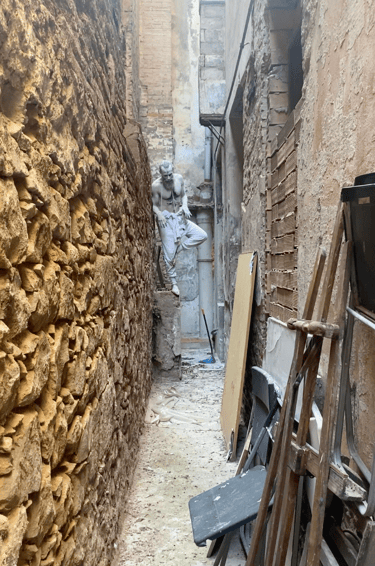

Workshops
Workshop and residency with Yi
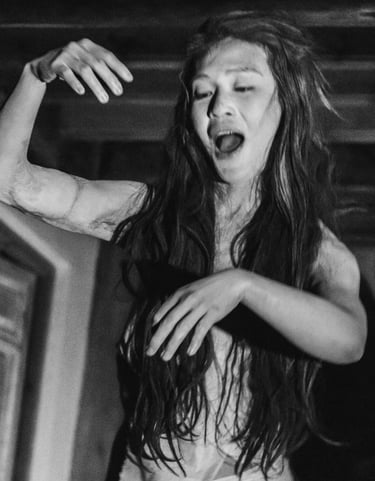

Ongoing research
The word ritual comes from the Latin word ritus, which referred to a prescribed form or a set of actions done in a specific way. The purpose of ritual, historically, was to invoke, honor, or communicate with a divine or supernatural force. It served as a means to bring human actions in alignment with cosmic, spiritual, or divine laws, often aimed at achieving harmony, balance, or a desired outcome. Body become the medium of such.
Rituals could take many forms, from offerings and prayers to specific gestures, chants, or dances, and they were deeply embedded in the cycles of life—birth, death, and the seasons, for example. These acts were often considered sacred, and part of the meaning behind them was to connect the participants to something larger than themselves, whether that was a deity, ancestors, nature, or the universe itself.
Hijikata often described his early performances in terms that suggested a ritualistic or shamanistic quality. He spoke of his work as a way to access deeper, often darker, aspects of the human psyche and to connect with primal, pre-cultural states of being. This aligns more with the concept of a ritual than with conventional understanding of dance.
Ankoku Butoh’s origin and techniques—Empty Body, Becoming, Shisha—challenge conventional performance, offering a unique lens for contemporary dance to explore the body’s transformative potential and redefine dance’s role in society.
© YunPeng云鹏
© Gurdeep Singh
Between Ritual and Contemporary
Embodied Research on the Liminal State
Alchemy of the Subtle Body: Dialogue with Nature
This ongoing research explores the deep interplay between the subtle body and the natural world, investigating how natural forces like sun, moon, and the shifting seasons, and subtle elements like earth, fire, water, air, space—shape both our physical and energetic states. Rooted in Eastern traditions and alchemical thought, it examines how these forces move through us, not as external influences alone, but as something we are inherently part of.
By embodying and observing nature itself, we return to a deeper sense of belonging—externally, through attuning to the rhythms of the land, sky, and cosmos, and internally, by rediscovering the elemental nature within our own bodies. This process is not just about movement but about transformation, where the body becomes a vessel through which nature speaks, revealing a silent dialogue between the self and the universe.
